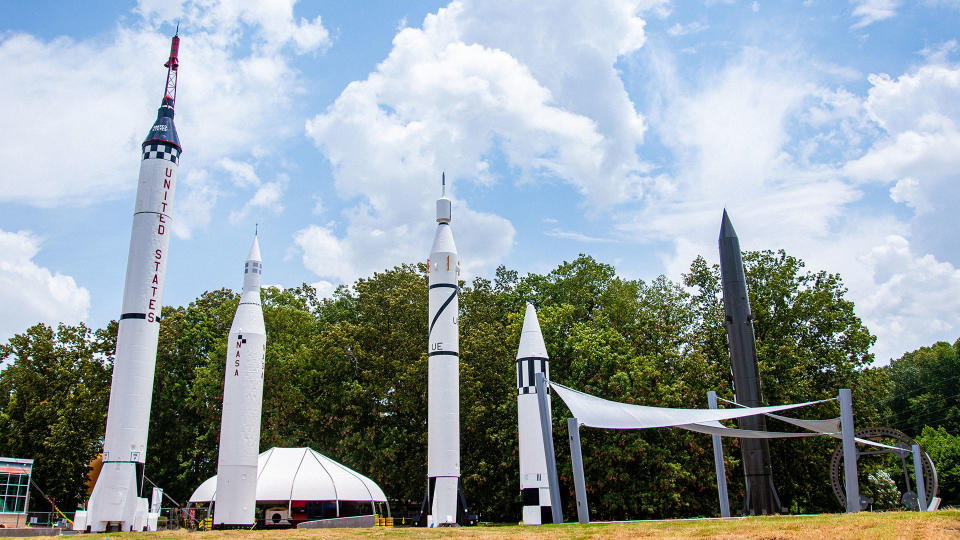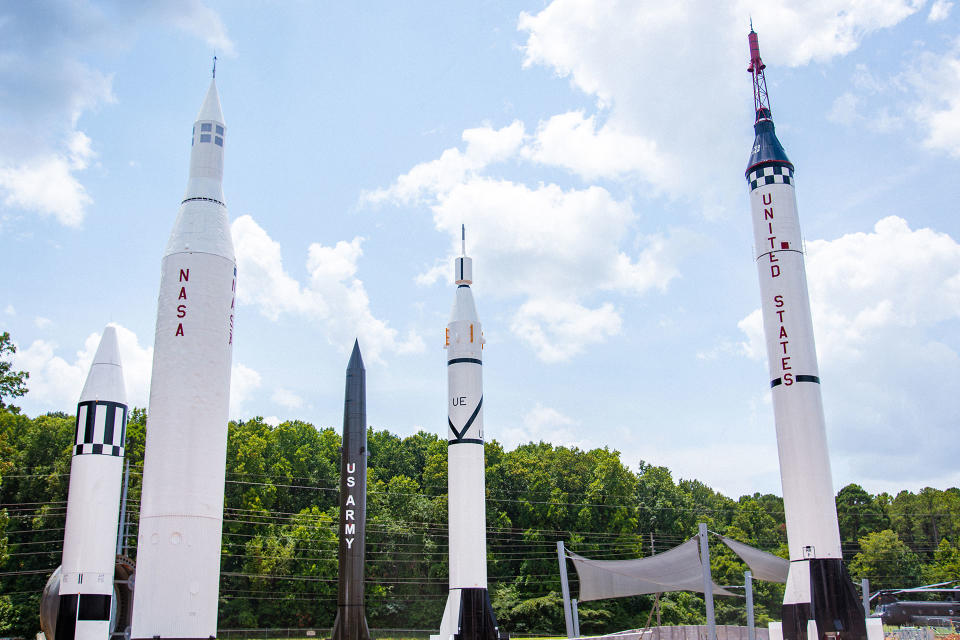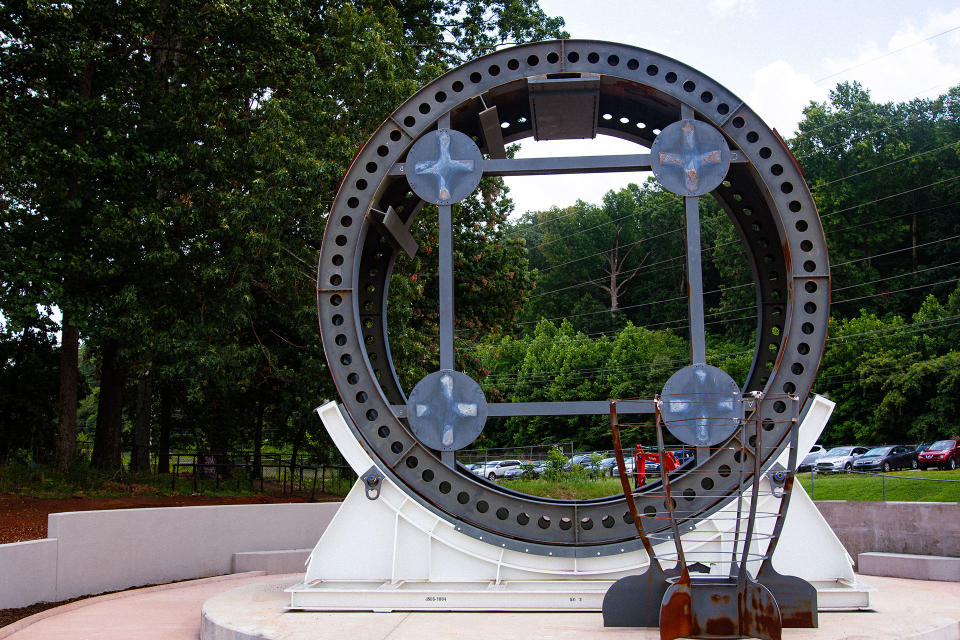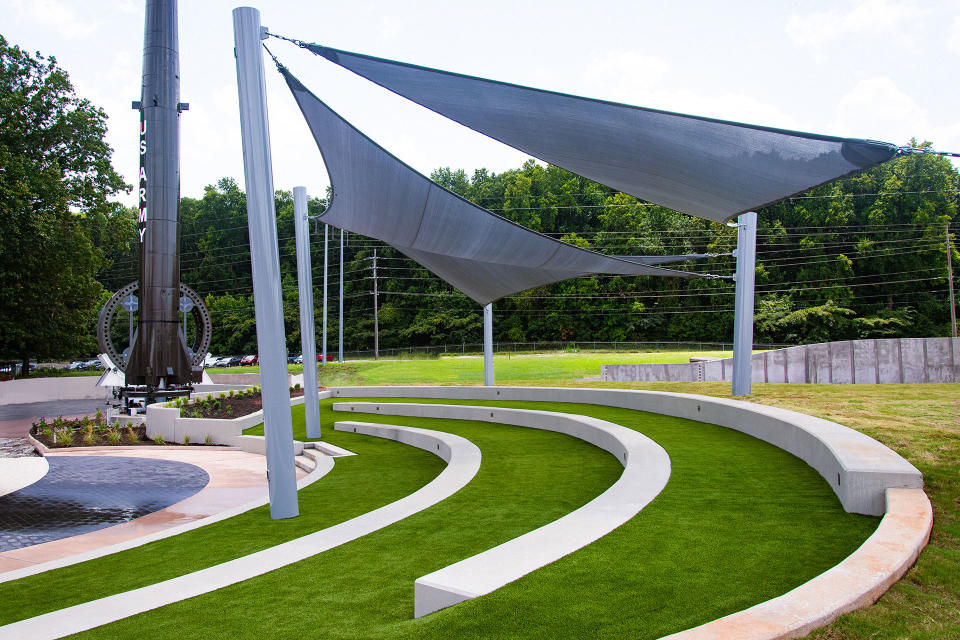When you buy through links in our articles, Future and its syndication partners may earn a commission.

Some cities have skylines. Huntsville, Alabama, has a “space line.” Or so it is with the restoration of “Rocket Row” at the U.S. Space and Rocket Center. On Thursday (July 18), a ribbon-cutting ceremony was held at the center’s Rocket Park to mark the first phase of the historic boosters’ return. After being lowered off-site for restoration in 2018, all five historic rockets are now standing tall again.
“These historic artifacts have welcomed millions of visitors and serve as tangible symbols of humanity’s journey into space,” said Kimberly Robinson, CEO and executive director of the U.S. Space & Rocket Center. “Originally intended for active space missions shortly after assembly, these rockets have stood proudly on display for more than five decades, withstanding the test of time and the elements.”
“But the years eventually took their toll,” she said, “creating an urgent need for restoration to preserve these priceless artifacts for future generations.”
The founder of a cloud computing company and father of a Space Camp attendee at the rocket center heard about the plight of the rockets and donated $2 million to the project. “Fred [Luddy] saw the state of our historic missiles and became concerned.
He generously offered and we gratefully accepted a large gift that set in motion the restoration of Rocket Row,” Robinson said. “We are so grateful for his heart of service. A heart that led him to help our little center and keep the legacy of these rockets alive for generations to come.”


Visitors to the center will soon be able to tour the newly redesigned and expanded Rocket Park, which features the U.S. Army Redstone, Jupiter, Jupiter-C, Juno II and Mercury-Redstone rockets. The five Chrysler-built vehicles, which were installed before the museum opened in 1970, represent the Redstone family of rockets that led to the development of the Saturn I and ultimately the Saturn V that launched NASA’s Apollo astronauts to the moon.
The dedication ceremony came two days after the 55th anniversary of the launch of Apollo 11, the first moon landing mission carrying astronauts Neil Armstrong, Buzz Aldrin and Michael Collins. Rocket Row also features an authentic Saturn I, restored in place. Nearby, a replica of the Saturn V stands outside the Davidson Center for Space Exploration, which houses one of only three surviving moon rockets.
Brooks Moore, a member of the U.S. Army’s rocket development team and a longtime instructor at the rocket center, drew on his personal history to advise on the redesign of Rocket Row. He died in April at age 97.
“I wish he could have been here today to celebrate with us,” Robinson said. “I’m so glad Brooks’ direction is now set in steel and concrete.”


Cosmos Aerospace in Cullman performed the restoration of the rockets, which included repairs and repainting. Juno II, for example, now sports the paint scheme of the 1959 rocket that launched Pioneer 4, the first U.S. probe to escape Earth’s gravity and flyby the moon before entering a heliocentric orbit.
The Mercury-Redstone rocket on display was returned to the same black-and-white markings it had when it “flew” on November 21, 1960. The booster was intended to launch an unmanned Mercury capsule on a suborbital flight, but after rising only four inches above the ground, it shut down and landed back on the launch pad (the capsule then fired its escape tower and was discarded).
New to Rocket Park is the engine portion of NASA’s Space Launch System (SLS) core stage pathfinder, an engineering simulator built to match the size, weight and center of gravity of the flight hardware. The pathfinder was used in 2019 at the Kennedy Space Center in Florida and other NASA centers for fit checks and to practice handling the actual core stages that will launch the next astronauts to the moon.
“This recent acquisition and exhibition reminds us that we are still on this journey of discovery,” Robinson said.
Work still remains to install the four mass simulators representing the core stage’s RS-25 rocket engines.


RELATED STORIES:
—
—
—
Once completed, Rocket Park’s expansion will include a new amphitheater for educational experiences and community events, as well as greener, more welcoming spaces. A prominent feature will be the Marshall Retirees Association’s Space Exploration Honor Wall. The memorial will include the names of more than 22,000 local men and women who have supported space exploration at Marshall Space Flight Center or at companies that have partnered with NASA in the Huntsville area.
The final element of the rocket center’s “spaceline,” the space shuttle Pathfinder, is expected to be completed in a few months after its own restoration. Pathfinder was NASA’s original mock-up of its post-Apollo winged orbiter, used for fit checks of the facility. Once complete, it will go back on display atop an external tank test article and prototype solid rocket boosters, making it one of only two complete shuttle stacks in the world.
The US Space & Rocket Center, a subsidiary of the Smithsonian, is the official visitors center for NASA’s Marshall Space Flight Center and is home to US Space Camp.
To follow collectSPACE.com on Facebook and on Twitter via @collectSPACE. Copyright 2024 collectSPACE.com. All rights reserved.